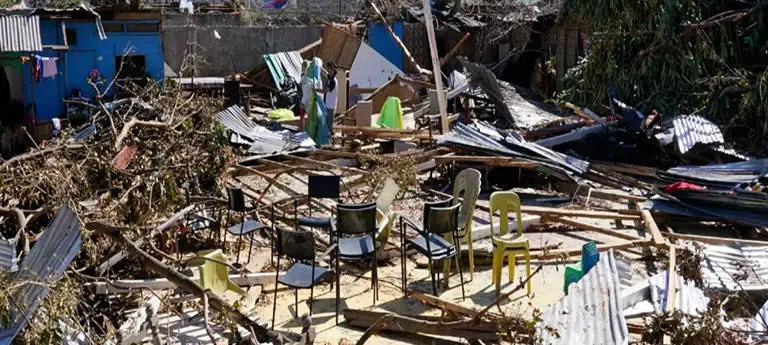SURIGAO CITY: The death risk from the strongest typhoon to hit the Philippines this time surged to 375 on Monday, as hopeless survivors contended for critical inventories of drinking water and food.
The Philippine Red Cross reported a “ complete holocaust” in littoral areas after Super Typhoon Rai left homes, hospitals, and seminaries “ ripped to shreds”.
The storm tore off roofs, pulled trees, stumbled concrete power poles, smashed rustic houses to pieces, wiped outcrops, and swamped townlets — sparking comparisons to the damage caused by Super Typhoon Haiyan in 2013.
“ Our situation is so hopeless,” said Ferry Asuncion, a road seller in the hard-megahit riverside megacity of Surigao, which was devastated by the storm.
Residers urgently demanded “ drinking water and food”, he said.
At least 375 people were killed and 56 are missing in the rearmost disaster to hit the archipelago, with 500 further injured, the public police said.
Further, then people fled their homes and beachfront resorts as Rai slammed into the country on Thursday.
One of the hardest-hit islets was Bohol– known for its strands, “ Chocolate Hills” and bitsy tarsier primates — were at least 94 people have failed, parochial Governor Arthur Yap said on Facebook.
Numerous rustic houses in Bohol’s littoral city of Ubay were smoothed and small fishing boats were destroyed on the islet, where a state of disaster has been declared.
An elderly functionary at the public disaster agency said he hadn’t anticipated as numerous deaths.
“ I was proven wrong as it appears now coming from the reports,” said Casiano Monilla, deputy director for operations.
Typhoon season
Rai hit the Philippines late in the typhoon season most cyclones develop between July and October.
Scientists have long advised that typhoons are getting more important and strengthening more fleetly as the world becomes warmer because of mortal-driven climate change.






